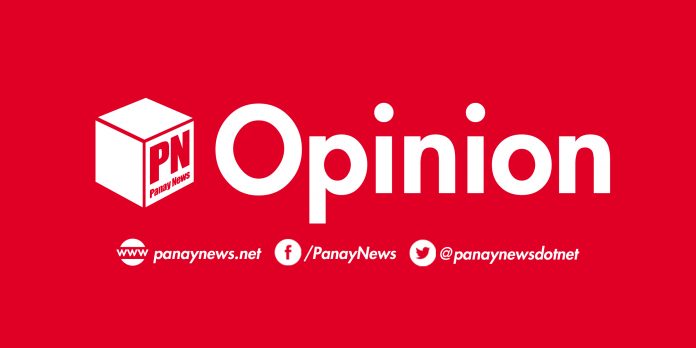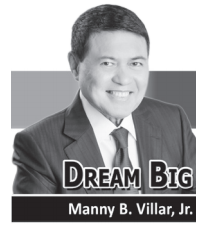
 BASED on what he’s done and still doing, I would say two words serve as Budget and Management secretary Benjamin E. Diokno’s primary guidelines in managing the huge government spending program: efficiency and honesty.
BASED on what he’s done and still doing, I would say two words serve as Budget and Management secretary Benjamin E. Diokno’s primary guidelines in managing the huge government spending program: efficiency and honesty.
A third word – reform – is the platform to achieve both efficiency and honesty. Needless to say, this is also what should guide any administration, if it were to achieve its mandate of spending its revenues for the benefit of the citizens it serves.
Diokno’s primary guidelines also fit into President Rodrigo R. Duterte’s commitment to eliminate the destructive factor of corruption in utilizing tax and other revenues for public services, including infrastructure.
The 70-year-old DBM chief, a professor emeritus at the University of the Philippines, is now on his third stint in the same department under the Duterte administration. He held the same position under President Joseph Estrada from July 1998 until Estrada’s ouster in January 2001. Prior to moving up to the Cabinet rank, Diokno served as DBM undersecretary for budget operations, from 1986 to 1991, during the administration of President Corazon Aquino.
In his career at the DBM, even under different administrations, Diokno has always been reform-oriented, always seeking ways to make government more efficient and honest in spending taxpayers’ money.
Some of his early initiatives:
* As DBM undersecretary in the Aquino administration, he provided technical assistance in the design of the 1986 Tax Reform Program, which simplified income tax and introduced the value-added tax (VAT), and the 1991 Local Government Code of the Philippines.
* In his less than three-year stint as DBM chief in the Estrada administration, Diokno succeeded in adopting reforms to enhance transparency and improve government efficiency in delivering vital services. These include the “what you see is what you get” or WYSIWYG policy, a simplified system of fund release for the General Appropriations Act. He utilized the rapidly improving information and communications technology (ICT) to improve the government procurement system (GPS). With technical assistance from the Canadian International Development Agency (CIDA), the GPS developed an electronic procurement system patterned after the Canadian model.
Diokno’s latest initiative sustains his belief that modern technology, like satellites, can be harnessed not only to improve efficiency but also to keep the government and its contractors honest.
I’m referring to “Digital Imaging for Monitoring and Evaluation” or Project DIME. According to his official statement: “Project DIME will help ensure that every peso allocated to government programs and projects will be used efficiently and effectively.”
The project is a collaboration between the DBM and the Department of Science and Technology (DOST), which aims to monitor the status and speed of implementation of government projects, especially those with high value.
Various technologies and expertise on data acquisition developed and acquired by DOST will be used in the program, including Light Detection and Ranging (LIDAR), Open Roads Platform and Geostore, and Geotagging. Satellites and drones will also be used in the program to cover areas that cannot be monitored through LIDAR.
Last year, the two departments began monitoring sample projects, like the National Greening Program of the Department of Environment and Natural Resources, National/Communal Irrigation Systems of the National Irrigation Administration, and the health department’s Health Facilities Enhancement Program.
Results of the monitoring activity allowed the DBM to evaluate the status of projects and to come up with recommendations on whether or not to continue funding of a project, or how to improve the project.
DBM has selected the programs and projects that will now be monitored through Project DIME. These include the construction/improvement of access roads leading to seaports and airports, the North-South Commuter Railway (PNR North), the Conditional Cash Transfer Program, Basic Education Facilities, Universal Access to Quality Tertiary Education, AFP Modernization Program, Local Governance Performance Management Program, Agricultural Machinery, Equipment, Facilities, and Infrastructures Program, Free Wi-Fi Internet Access, and the National Fisheries Program.
President Duterte’s economic team is working on a tight schedule, as the flagship infrastructure program, “Build Build Build” involves spending P8 trillion to P9 trillion to ensure that vital infrastructure is put in place by the time the President leaves office in 2022.
Not all the projects will be completed in the next five years, but the Department of Public Works and Highways’ decision to shorten deadlines for completion of road and bridge projects, for instance, shows the team’s determination to complete as much as it could with the time allotted to it.
One thing about Diokno’s reform initiatives: the use of satellites and other modern technology means that implementation of public projects will be transparent, so contractors and government officials, whose personal contacts are also diminished, would always be on their toes.
The deliberate secrecy in many transactions between the government and the private sector in the past had drained the government coffers, with the people left with unfinished or even ghost projects.
Hopefully, with Diokno as a very strong member of President Duterte’s economic team, the government could proudly tell the people: “This is where your taxes go.”
***
This piece first came out in Business Mirror on April 9, 2018 under the column “The Entrepreneur.” For comments/feedback e-mail to: mbv.secretariat@gmail.com or visitwww.mannyvillar.com.ph./PN

